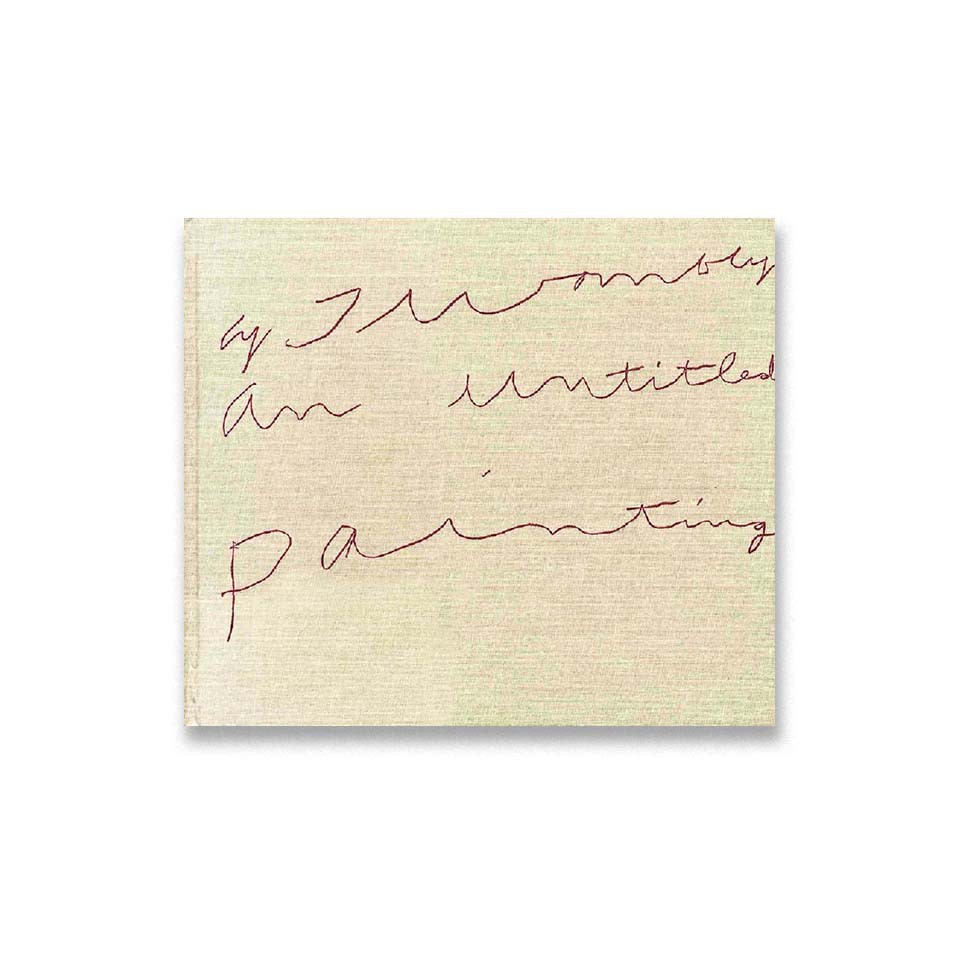

This catalogue, published on the occasion of Gagosian’s exhibition of Twombly’s monumental painting Untitled (Say Goodbye, Catullus, to the Shores of Asia Minor) (1994), includes color reproductions and Robert Pincus-Witten’s essay “Twombly’s Quarantine.” Pincus-Witten reflects on the unusual twenty-five year duration of creation for the painting, then exhibited as “Untitled Painting.” He considers Twombly in relation to Jasper Johns and Robert Rauschenberg, foregrounding their shared Southern origins, and claims that “Southern painters appear private to the point of neurosis” (5). Arguing against framings of the artists as “a triumvirate bridging Abstract Expressionism and Pop Art,” Pincus-Witten suggests instead that “it is Twombly who remains steadfast to the constituent attitudes, once, patriarchal constraints, of Abstract Expressionism” (7). He argues firmly for Twombly’s intellectual and artistic independence, and asserts that “the visible evidence of Twombly’s painting is what makes it worthwhile, not an abstruse iconography by which the painter may be attracted” (7). Attending closely to Twombly’s use of poetry, Pincus-Witten frames Twombly’s selection of poets as embodying “a rediscovered modern erotic yearning, idyllic and Mediterranean in its unrepentance” (13). He describes the affective and artistic atmosphere of Rome and Twombly’s immersion in it, and writes that “Twombly prefers to remember Rome as the city of great English poetry, of Keats, Shelley, and Byron” (13). Nevertheless, Pincus-Witten maintains that Twombly’s oeuvre fundamentally concerns “touch, not subject” (14). Returning to the then Untitled Painting, he offers formal analysis and identifies sources for major inscriptions on the painting, such as Robert Burton’s The Anatomy of Melancholy. He quotes Twombly as describing the painting as occurring in “generic space, a loose gravitation comparable to mythology itself which also has no center of gravity” (17). He concludes with reflections on Twombly’s “sense of tragic ambition, transcendence, epic scale” and the painting as “the consummate magisterial effort of the painter’s splendid career” (21).
For more on Untitled (Say Goodbye, Catullus, to the Shores of Asia Minor), see also: Cy Twombly Gallery, ed. Nicola Del Roscio and Julie Sylvester (2013); Mary Jacobus, “Mediterranean Passages: Retrospect” in Reading Cy Twombly: Poetry in Paint (2016); Richard Leeman, Cy Twombly: A Monograph (2005); Thierry Greub, Inscriptions (2022); David Sylvester, Interviews with American Artists (2000); Hayden Herrera, “Cy Twombly: A Homecoming,” in Harper’s Bazaar (1994); and Writings on Cy Twombly, ed. Nicola Del Roscio (2002).
(Publication description by Jamie Danis)
Published on the occasion of the exhibition Cy Twombly: Untitled Painting at Gagosian Gallery SoHo, New York (September 24, 1994–January 7, 1995).
Cy Twombly: An Untitled Painting. Essay by Robert Pincus-Witten. Published by Gagosian Gallery. New York, 1994; 25 pages; 8 color illustrations.